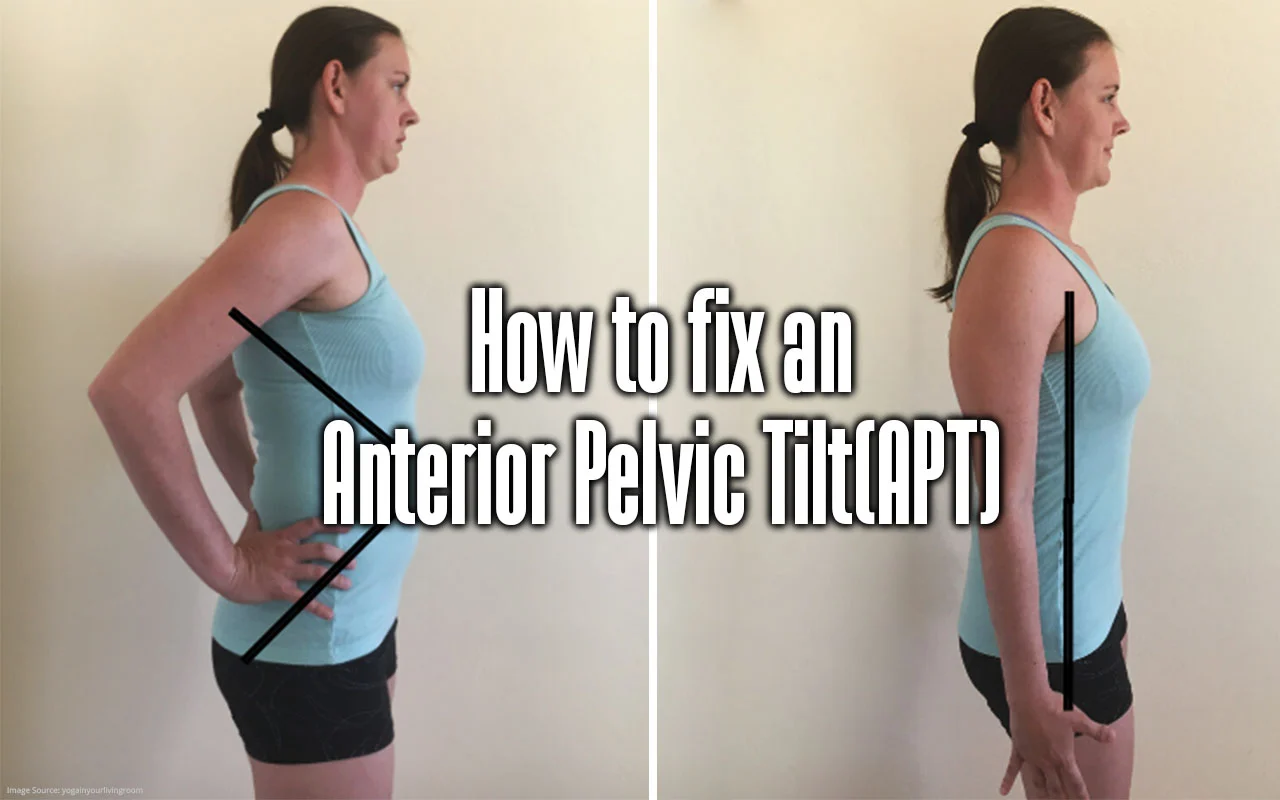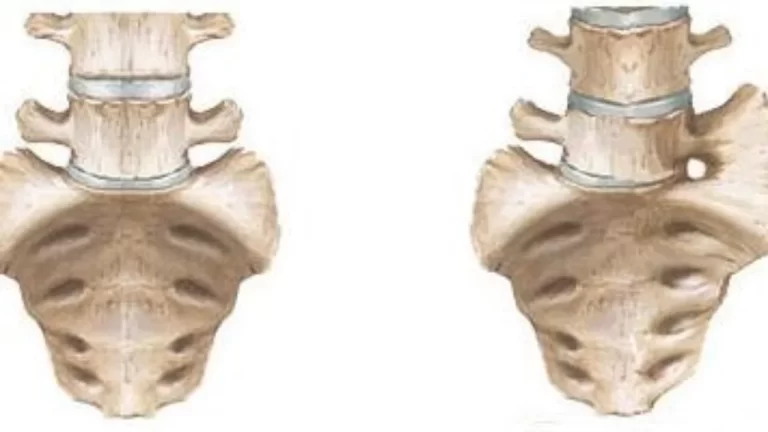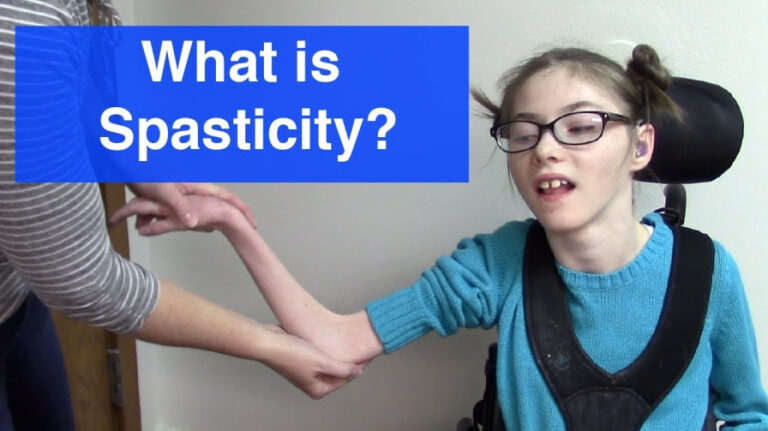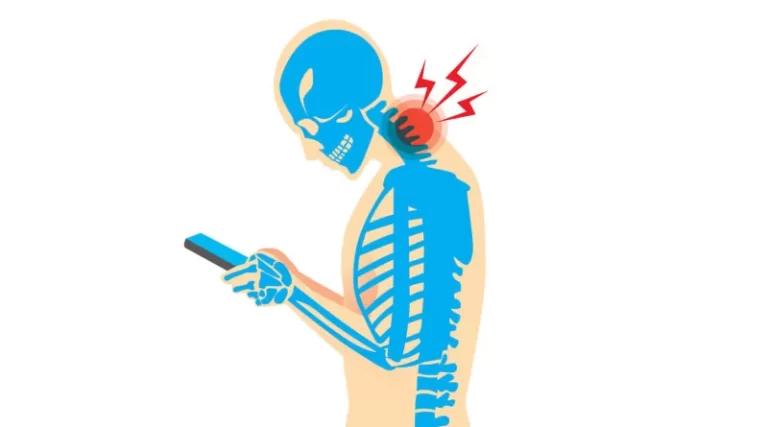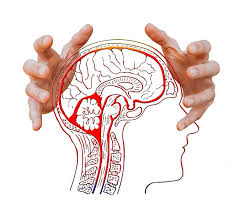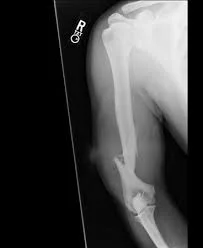How To Fix Anterior Pelvic Tilt?
Table of Contents
Introduction
A prevalent condition called anterior pelvic tilt causes your pelvis to tilt or move forward. According to research, 85% of males and 75% of women are affected. This bad posture can lead to several health issues.
Numerous exercises can be used to address an anterior pelvic tilt. Seeing a healthcare professional is usually a good idea before beginning a new exercise program.
A forward tilt or rotation of the pelvis, which is made up of the hip and pubic bones, is referred to as an anterior pelvic tilt. An imbalance in the muscles of the lower body is the cause of this. The pelvis is propelled forward by a combination of tight and weak muscles.
The tensed, overactive muscles listed below may contribute to anterior pelvic tilt:
- the quadriceps group, which comprises the muscles of the front thighs, and the hip flexors, which are the little muscles in the front groin area
This condition may be caused by the muscles on the following list of weak, underactive muscles:
- The lower abdominals, or gluteus group, are made up of the muscles in the buttocks, the hamstring group, the muscles in the back of the thigh, and the rectus abdominis.
- A person with an anterior pelvic tilt frequently has a noticeable buttock protrusion and an accentuated lower back arch.
Methods for Assessing Anterior Pelvic Tilt
Measuring the angle between your anterior superior iliac spine (ASIS) and posterior superior iliac spine (PSIS) is a straightforward process.
Tell me, how can I accomplish this? You may either ask a buddy to assist you, or you can stand sideways in front of a mirror.
Step 1: Find your PSIS. These are located directly under the divots in your lower back. If you slightly shift your fingers left and right, you will feel a bony protrusion on either side.
Step 2: Find your ASIS. Since they are very bony, you should have no trouble finding them; they are located in front of your hips, roughly at the same level as the PSIS.
Step #3: At this point, visualize a line connecting your PSIS and ASIS…..
Time to assess:
You may have an anterior pelvic tilt if your descending line is much larger—up to two inches. Remember that women often have a more anterior pelvic tilt than males do and that there is a little descending line (about ½ inch) between the PSIS and ASIS by nature.
Symptoms
- Even in people without any symptoms, anterior pelvic tilt can lead to a hunched back and bad posture.
- Anterior pelvic tilt is usually asymptomatic. If they do have symptoms, they could notice the following: tense muscles in the pelvis and thigh areas; weak gluteus maximus, and stomach muscles.
- slouching with a protruding abdomen and a bent lower back
- Though these diseases are commonly reported as symptoms, there is little evidence to support the hypothesis that anterior pelvic tilt is the cause of lower back, hip, or knee discomfort.
Using the Thomas test for diagnosis
In addition to posture and spine form, the Thomas test is another diagnostic assessment of anterior pelvic tilt. Known by the same name as the British surgeon Hugh Owen Thomas, it is a procedure that may be used to detect anterior pelvic tilt.
To complete this easy test, individuals should:
- Take a seat on a table. The legs have to be at knee height, dangling off the table.
- Bending and grasping at the knee, pull one leg towards the chest. Then do the same process with the other leg.
- The rear of the resting leg will lift off the table if the pelvis is misaligned.
- A pelvic tilt is indicated if the resting leg needs to be extended or rotated in any way to prevent it from rising off the table.
What Leads to Pelvic Tilt Anteriorly?
The hip flexors’ shortening and the hip extensors’ lengthening are the causes of anterior pelvic tilt. As a result, the upper back and lower spine both become more curved.
The muscles that connect the thigh bone to the pelvis and lower back are called hip flexors. They are employed for hip bending, running, and kicking.
The gluteus maximus and three other muscles together referred to as the hamstring muscles make up the hip extensors. They aid in hip extension.
One such factor contributing to anterior pelvic tilt is weak stomach muscles.
Prolonged sitting can lead to changes in the structure of the spine and accompanying muscular imbalances. Anterior pelvic tilt is further aggravated by a lack of stretching or strengthening activities.
- Sitting or standing in poor posture
- Muscle imbalances
- Improper bending/lifting (Learn to hip hinge)
- Obesity
- Pregnancy
Anterior pelvic tilt vs posterior pelvic tilt
Similar to anterior pelvic tilt, posterior pelvic tilt involves the pelvis tilting or rotating back. Posterior pelvic tilt is caused by a contraction of the hip extensors and a lengthening of the hip flexors. These alterations may be brought on by your gait, habits of movement, etc.
By regularly stretching and strengthening the relevant muscles, you can improve posterior pelvic tilt, just as you do with the exercises for anterior pelvic tilt (which are covered in more depth below). Leg lifts, hamstring stretches, and lunges are a few of the best workouts. Another tool for stretching shortened muscles is a foam roller.
How To Fix Anterior Pelvic Tilt?
It’s essential to address the muscular imbalance by strengthening the weaker muscles and releasing/stretching the tight muscles to rectify an anterior pelvic tilt. Let’s examine the muscles that we will be working on.
Among the tense muscles are:
- Hip flexors: iliacus, rectus femoris, psoas, and tensor fascia latae
- Erector spinae, multifidus, quadratus lumborum, and latissimus dorsi are examples of back extensors.
Among the weakened muscles are:
- Internal and external obliques, transverse abdominis, and rectus abdominis are the core muscles.
- Gluteal muscles (gluteus maximus, medius, and minimus)
Five Stretches for Anterior Pelvic Tilt Correction
Hip Flexor Stretch on a Knee
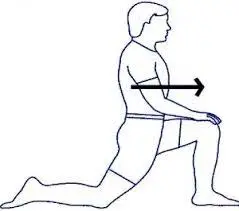
This exercise facilitates the elongation of taut hip flexors, which are frequently observed in people with anterior pelvic tilt.
How to do it:
- Get on your knees on a padded surface to start this stretch.
- Bring your right leg forward, plant your foot level on the floor, and align your knee with your ankle.
- Your left knee should be 90 degrees bent and still in touch with the soft surface.
- Brace your core as you slowly shift your right foot forward a few inches.
- Lift your hips forward and contract your gluteal muscles on the right side.
- At this point, your left knee should be bent just slightly over 90 degrees.
- For ten seconds, hold the final position.
- Do this stretch on both sides, aiming for ten repetitions.
The Child’s Position
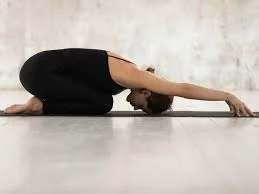
The back muscles, including the Latissimus dorsi, which are often tense during anterior pelvic tilt, are released by this stretch.
How to do it:
- Starting on your hands and knees, place yourself on the floor with your knees slightly wider than your hips.
- Bend your knees, turn your toes inward to contact, and push your hips rearward.
- After you’re in a relaxed position, extend your arms straight forward and let your head drop forward into a relaxed position.
- Maintain your stance for a duration of 15 to 20 seconds.
- Return to the starting position slowly.
- Aim for three times around.
Cat & Cow
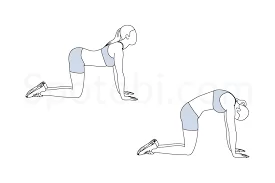
This exercise facilitates the release of stiff back muscles (the Erector Spinae) associated with anterior pelvic tilt.
How to carry it out:
- Get on your hands and knees to start this stretch.
- Take a breath, look up at the ceiling, and let your stomach “drop” to the ground.
- Breathe out, round your spine gently, push your palms into the floor, and bend your neck slightly to look down at your feet.
- Try to perform this stretch five times.
Warrior 2 Pose
![Warrior III Pose[Virabhadrasana III]](https://mobilephysiotherapyclinic.net/wp-content/uploads/2023/12/Warrior-III-PoseVirabhadrasana-III.webp)
This position opens up the hips, especially the TFL muscle, and strengthens the legs.
How to carry it out:
- Bend your right knee over your right ankle while turning your right toes towards the wall on your right from the Five Pointed Star stance.
- Reach out towards the side walls while angling your hips and shoulders to the front.
- Look in the direction of your right middle finger.
- Maintaining the strength in your legs, press onto your feet.
- To assist stretch your spine, tuck your hips towards the floor and reach up for your head.
- Press your chest upward while letting your shoulders drop back and relax.
- Sustain this posture for a maximum of 60 seconds.
- Step your feet forward and slowly straighten your legs to return to the five-pointed star posture.
Double Knee to Chest

By extending the muscles (Spine extensors), which are frequently tense in people with anterior pelvic tilt, this stretch aids in releasing tension in the lower back.
How to carry it out:
- Start by laying on your back on a mat with your feet flat on the floor and your knees bent.
- After placing your right hand behind your right knee, slowly move your right knee towards your chest, followed by your left knee.
- Maintain your stance for an amount of time of 15 to 20 seconds.
- Unwind and bring each leg down to the beginning position one at a time.
- Try to complete three reps of this stretch.
Here are 5 strengthening exercises to help you fix it:
Plank

This is the perfect workout to develop your gluteal muscles and deep core.
How to perform it:
- Start by placing your forearms against the mat while resting on your stomach.
- As you raise your body to rest on your forearms and toes, contract your core.
- Make sure your back is in a neutral posture (i.e., not hunching over or raising your butt).
- After holding the plank posture for 20 to 30 seconds, drop to the ground.
- For this exercise, aim for two to five repetitions.
- **Always maintain a straight back for the whole workout.
Glute Bridge
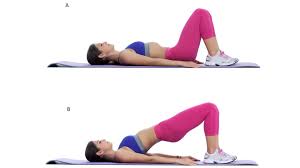
You can strengthen your back, gluteal, and core muscles with this workout.
How to carry it out:
- Start by laying on your back on the floor with your feet flat on the ground, your knees bent, and your arms resting next to your body.
- Before you move, tense your abs and brace your core.
- Continue squeezing your butt while bracing and raising it off the ground.
- After five seconds, hold this posture, then gently go back to your starting position.
- Try to get ten reps.
- **During this exercise, avoid hyperextending; instead, feel your glutes stimulating.
Squats

This full-body workout strengthens your back, hamstrings, and glutes, among other muscles.
- How to perform it: Start by placing your feet shoulder-width apart while standing.
- Look straight ahead and brace your core.
- Maintain a firm core, then bend your knees to a roughly 90-degree angle (as if you were sitting) by hinging at the hips.
- utilize your legs to push yourself up, then utilize your glutes (squeeze your butt) to maintain your position. – Try to complete 10–15 repetitions.
- **Beyond a 90-degree angle, squatting is not advised. Squatting, even at a modest range, will build muscle.
Dead Bug
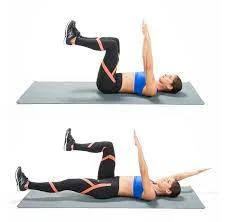
This exercise helps to enhance stability in the hips and trunk as well as deep core strength.
- How to perform it: Start by lying on your back and extending both arms upward.
- Raise your legs to a 90-degree angle.
- By bracing your core muscles and moving your pelvis upward, you can attempt to flatten your back onto the floor by exhaling to lower your rib cage. Note that this is the beginning posture for the exercise, which you must maintain throughout.
- Extend your left leg to begin the exercise, then straighten it at the hip and knee, lowering it to a slight elevation above the floor(avoid arching your lower back); simultaneously, return your right arm to a position just above the ground.
- Return your left leg and right arm to the beginning position while maintaining your abdominal and gluteal muscles taut.
- Continue with your left arm and its alternative leg.
- Alternate sides for 20 repetitions.
Bird Dog

This is a fantastic workout to strengthen your lumbar back muscles and core.
How to carry it out:
- Start on your hands and knees, placing your hands behind your shoulders and your knees beneath your hips.
- As soon as you start any movement, firmly brace (contract) your core.
- Raise your left arm and stretch forward until it is in line with your body while bracing your core. At the same motion, kick your right leg backward until it is in line with your torso.
- It’s crucial to avoid arching your lower back when performing this.
- After two to three seconds, hold this posture and then gently go back to the beginning position.
- Continue with your left leg and right arm.
- Repeat ten times, switching sides.
- ** Don’t arch your lower back; instead, only extend your arm and leg as far as is comfortable.
Prevention tips
The following suggestions may reduce anterior pelvic tilt.
- Avoid sitting for long periods. Individuals who work at desk jobs or in other positions that require them to sit motionless for long periods should take regular breaks to stretch or go for walks.
- Engage in frequent physical activity. Exercises for strengthening and extending should be part of this.
- Ensure that your posture is correct, particularly when sitting.
When to see a specialist?
Anterior pelvic tilt is a dangerous issue in kids, teens, and young adults that needs to be checked out by a specialist. Seeking assistance from a professional is also advised for those who feel pain or discomfort, or who see that their pelvic tilt is getting worse.
Those who desire to begin any new workout regimen should visit a doctor beforehand.
How long does anterior pelvic tilt take to correct?
Anterior pelvic tilt can be corrected in as little as six weeks, according to some research. Nonetheless, it’s fundamental to acknowledge that each person is different.
Some people might just need a few weeks to begin correcting their anterior pelvic tilt, while others could need more time. It might take longer to correct, for example, if your pelvis has been tipped forward for a long period. But if you continue with exercises like the ones mentioned above, you will start to see results.
Overview
The entire body may be impacted by an anterior pelvic tilt, leading to pain or discomfort in various places.
Individuals must determine their status before beginning anterior pelvic tilt exercises. Upon verification of their pelvic tilt, carrying out the specified activities might potentially decrease discomfort.
FAQs
The Anterior Pelvic Tilt (APT) Spectrum: How to Treat Anterior Pelvic Tilt and Lumbar Lordosis
However, in other situations, a person only has to make little adjustments to their exercise regimen to receive therapy. APT is a treatable condition, however, recovery to normalcy may need significantly more effort from some people than from others.
Using a standing workstation at the office is another method that an individual may assist rectify an anterior pelvic tilt.
standing up frequently and stretching if you spend a lot of time sitting down.
Steer clear of high heels.
obtaining insoles or foot workouts from a podiatrist.
Your stomach will be protruding forward as a result of an anterior pelvic tilt, gradually weakening your abdominal muscles. Also, your stomach could look more substantial.
If you are diagnosed with pelvic tilt, don’t let it concern you. When physical treatment is administered correctly, the problem can be entirely treated. Pelvic tilt can be effectively addressed by using counteractive corrective motions in conjunction with therapeutic exercises.
The easiest way to sleep with anterior pelvic tilt is to place a cushion or blanket beneath your knees if you often sleep on your back. Your lower back muscles extend and relax as a result of your pelvis being realigned from its anterior tilt to a neutral position.
References
- Anterior Pelvic Tilt. Baptist Health. https://www.baptisthealth.com/blog/sports-medicine/anterior-pelvic-tilt
- Exercises to fix anterior pelvic tilt. https://www.medicalnewstoday.com/articles
- How to Fix Anterior Pelvic Tilt. https://www.healthcentral.com/condition/back-pain/how-to-fix-anterior-pelvic-tilt
- Timeline to Fix Anterior Pelvic Tilt & Exercises That Help https://www.issaonline.com/blog/post/timeline-to-fix-anterior-pelvic-tilt-exercises-that-help
- Six fixes for anterior pelvic tilt. https://www.medicalnewstoday.com/articles

